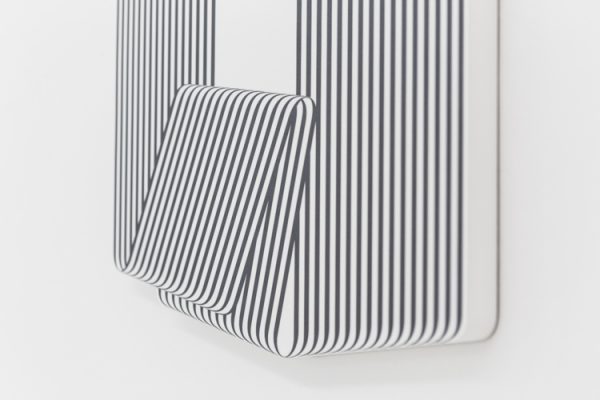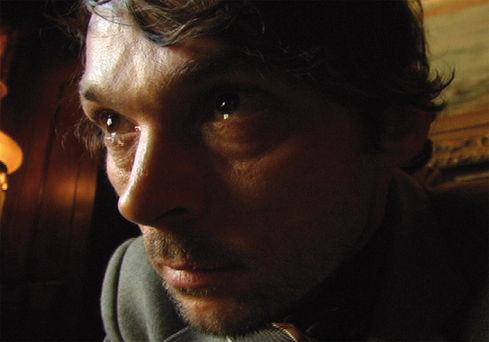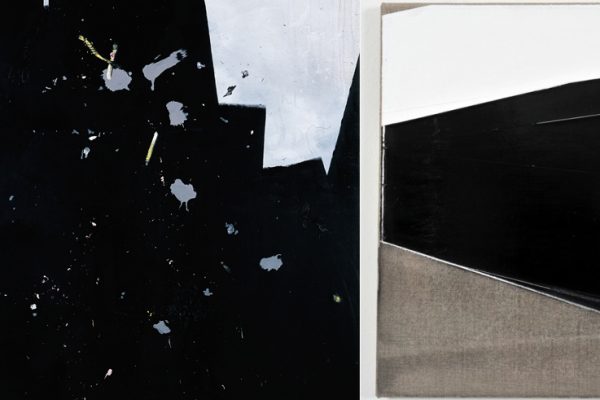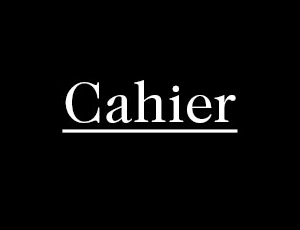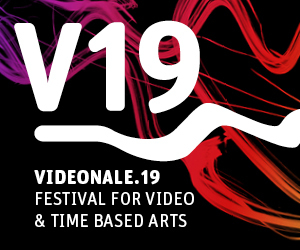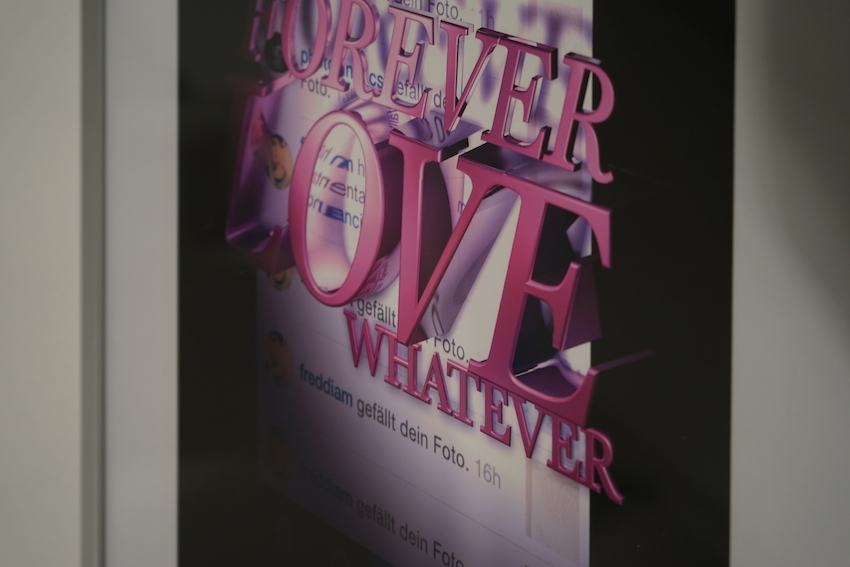
Besprechung
.htaccess
Frederica Miller on „.htaccess“ at Digital3mpire, Düsseldorf, with Giulia Bowinkel & Friedemann Banz, Olia Lialina, Timothy Shearer featuring Nikolas Müller, until mid April
Opening on the week that controversial art critic Jerry Saltz was banned from Facebook, ‘.htaccess’ could not have come at a better time. Now on at Digital3mpire Gallery, Düsseldorf the exhibition explores how our relationship to computers and the internet has radically evolved since their creation. In a matter of decades the computer has transformed from an exclusively military apparatus into an essential everyday item. ‘.htaccess’ aims to confront our growing dependence on internet-access. Its curator, Florian Kuhlman, spoke to me about how he was inspired after reading the work of Johannes Thiess, an online activist who sees information as ‘the drug of our time’, and the devices that we use as ‘enablers.’

‘I think it’s an interesting concept, because we can recognise it, we are addicted to the click, to this vice.’ Kuhlman explained. ‘The exhibition takes it’s name from a technical computing term; .htaccess is a website protection file, it controls whether a username and password are necessary in order to access a website’s content.’ In other words .htaccess is what dictates how we as users interact with a webpage as well as the information that we are able to view. The issues of online protection and access are pertinent ones. In an age when being locked-out or forcibly disconnected can seriously disrupt out lives ‘.htaccess’ asks us to consider how we can adapt our online behaviour to better cope with the necessary evil that is the internet.
The exhibition addresses these issues through the work of five different artists from across the digital decades, starting with Olia Lialina, a pioneering internet artist who has been dealing with the web for 20 years. Her piece ‘User Rights’ is a projection of alternating, animated bubble-font 3D phrases taken from her site: http://userrights.contemporary-home-computing.org/. The webpage is a forum where visitors can contribute suggestions and generate discussions about internet user-rights. The departure point for discussion being: ‘I demand the right to…’ Amongst the varied list of suggestions are: ‘The right to install an operating system of my choice on a computer/phone/tablet/device.’, or simply, ‘The right to log-in.’ Whilst the projection consists of only a few suggestions, a printed screenshot of the full list has been stuck up to view on the next-door wall. Lialina presents a political matter in an approachable manner, although her work evokes a sense of 90’s web-optimism, advocating the idea that the internet can be conceivably run by its users, it nonetheless raises a crucial topic; that of user-rights and how we as everyday users still have a choice over how we behave online.
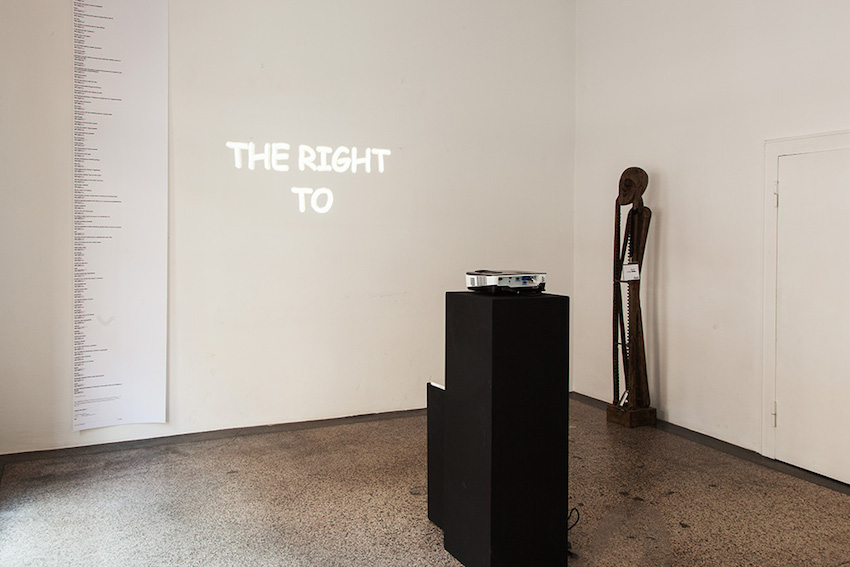
Artist Timothy Shearer takes a more pessimistic approach. His piece titled ‘Death of the artist’ consists of a traditional-seeming wooden sculpture of an African man that simultaneously functions as a CD rack. This bizarre item was purchased by the artist at a home-decor store and succinctly sums-up how in a rapidly evolving world the clash of Eastern and Western cultures can combine to produce near-impotent objects. The sculpture acts as a shrine not only to dying media, but to a disappearing age. The fact that the CD is on its way out makes the sculpture’s practical use precarious, a point emphasised by the two extinct technologies resting at the object’s feet: a Jaz Disk and a Zip Disk, these former storage devices serve as a stark reminder of how the relentless advance of the digital age deletes everything left in its wake.
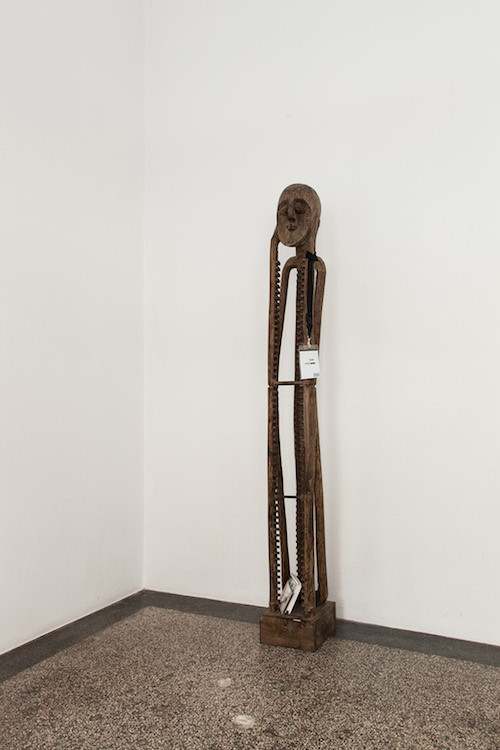
At the peak of 3D technology artists Giulia Bowinkel & Friedemann Banz present an interactive painting. The couple who trained at Kunst Akademie Düsseldorf stand out from their contemporaries for their decision to adopt the computer as a canvas. Their large painting features colourful, abstract 3D splashes of car paint and can only be entirely viewed by downloading a smartphone app. The app allows the smartphone owner to observe and interact with a 3D aspect of the painting through the interface of their device. Whilst such technology is tantalising, the more potent question behind this piece is the aspect of being denied access. The work evokes the daunting reality of our ability to experience being dictated by the technology that we own.
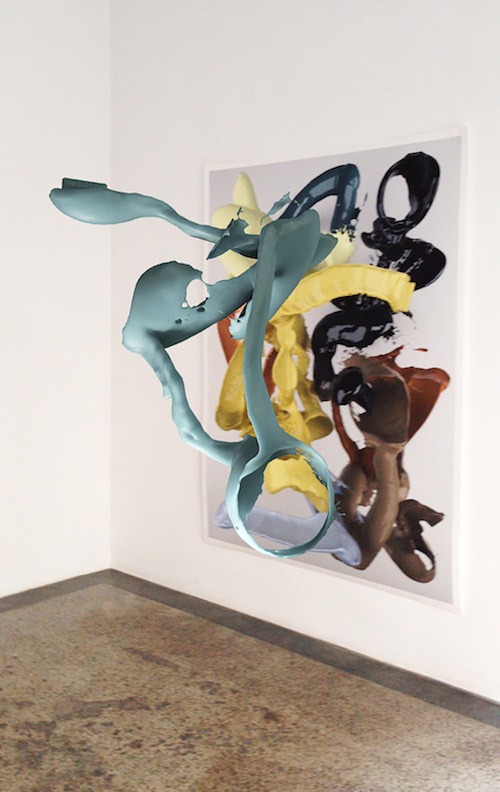
A 3D animation by artists Nikolas Müller and Timothy Shearer further expands these concepts of privacy and access. The video leads us into a dystopian world where, surrounded by military fences, a surreal sculpture suspended in the background, we are confronted by a sequence of abstract and pop-culture images that come into focus from disorientating angles. Emerging from the darkness we are first faced with a multiple-choice question: how, if given the chance, would we choose to reproduce the personal information of the world’s most powerful art critics? The choices include ‘As give away stickers’ or ‘ As none of the above.’ Having posed this question the video zooms out to focus in turn on a revolving placard on with the slogan ‘‘Tales from encryption/decryption” over the head a pop-culture figure in a skull mask, a set of dice above a chequers board, a length of lion-headed gates and a locked safe with a box of popcorn on top of it. Whilst this frenetic sequence of images at first feels random, it manages to relay the hypnagogic nature of the internet. It represents a heterogenous space in which privacy, pop-culture and human fantasy overlap, whilst the presence of the constructivist-coloured dice serve to remind us of the lack of chance within a system that is ultimately controlled by code.
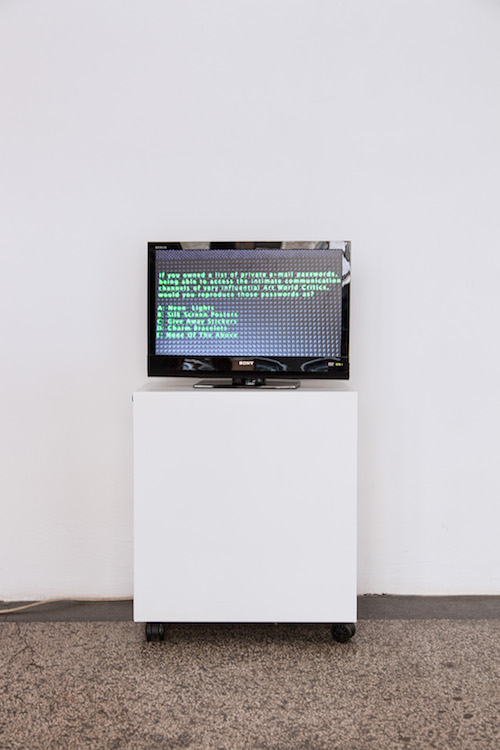
In addition to the larger works on display each of the artists have produced a unique print to be included in an exclusive edition of the exhibition. Whilst each of these works are praise-worthy the serendipitous timing of Nikolas Müller’s ‘Valentine’s Edition’ makes it stand out the most. The print consists of a screenshot taken from the artist’s iPhone, it shows a ‘like’ that the Müller’s work received on Instagram from critic Jerry Saltz. Imposed over the screenshot, in bright-pink 3D lettering are the words: ‘Forever Love Whatever.’ Although there is no ignoring the happy coincidence of Saltz having been blocked by Instagram’s parent company a matter of hours before, the work still speaks for itself. The slogan ‘Forever Love Whatever’ is two-fold, whilst clearly a play on ‘Forever Now’ the Moma exhibition that Saltz famously described in terms of ‘Zombie Formalism,’ it furthermore hints at our lost love for the internet.

Foto: Frederica Miller
Since the 90’s our perception of the internet has changed from a utopian dream to an uncomfortable reality. In the wake of Wikileaks and Edward Snowden, ‘.htaccess’ employs art as a powerful reminder that pushes us to recognise the real implications of staying ‘connected.’ The exhibition will be on view at Digital3mpire, Düsseldorf until April.
Frederica Miller is a freelance writer from London now living in Cologne. She has recently started her blog https://thisaintberlin.wordpress.com/

